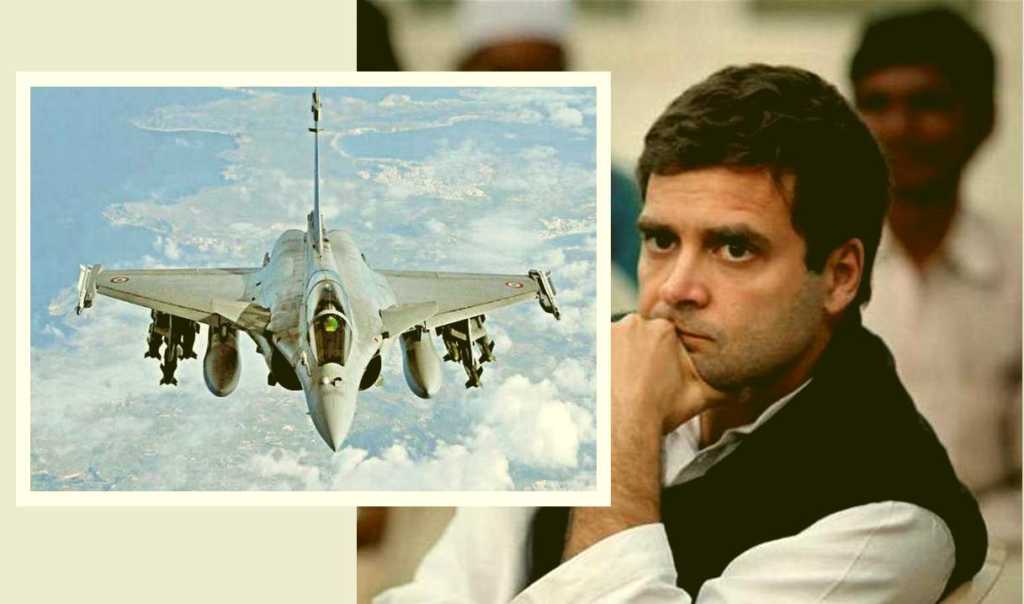Congress tried to corner the Modi government over the Rafale aircraft deal, questioning why it was deliberately obfuscating facts and changing its standpoint on the Rafale defence pact. Congress questioned defence minister Nirmala Sitharaman after she said that the government cannot disclose details of the purchase of 36 Rafale fighter jets from France.
So why is Nirmala Sitharaman not answering Congress’s queries and what is so secretive about the Rafale Deal? The Answer to it is long, a bit technical, but at the end of answer, Congress’s absolute lack of logic will become absolutely clear.
The History of Rafale Deal
The Indian Air force had projected a requirement for 126 (seven squadrons of 18 aircrafts each) aircrafts way back in 2001 when its strength was starting to fall. Initial requirements appeared to be for a 20-ton class fighter aircraft with the Mirage 2000 as the strongest contender. The IAF wanted to buy an aircraft like the Mirage 2000-5, as it was impressed by the Mirage 2000’s capabilities during the Kargil War. However, the French aerospace industry was winding down Mirage 2000 production due to lack of orders and preparing for the manufacture of the Rafale aircraft.
While initially, the French officials stated that the production lines of Mirage 2000 could be kept open if India was ready to make a firm commitment, but the Indian Government decided to go in for a multi-vendor tendering process, Requests for Information (RFI) for which were issued in 2004. Initially, aircrafts in the running were: Mirage 2000-5 Mk.2 (Dassault, France), F-16C/D (Lockheed Martin, USA), MiG-29OVT (Mikoyan, Russia), and JAS 39 Gripen (Saab, Sweden).
The Defence Ministry had allocated INR 55,000 crore (US$8.6 billion) for the purchase of these aircraft, making it India’s single largest defense deal. However, the 20-ton MTOW limit requirement was later removed and this limit was revised to 24-tons. Due to the tedious tendering process and the long delay in issuing the RFIs, Dassault removed the Mirage 2000-5 from the bidding process and enter the Rafale in its place. The MiG-35 was entered in place of the prototype MiG-29OVT. The Eurofighter consortium entered the Typhoon into the competition.
The Boeing F/A-18E/F Super Hornet also joined the tendering. While the Indian Air force had initially sought a medium weight fighter to fulfill the medium niche between the heavy Air dominance Sukhoi 30 MKI fighters and the light MiG-21s, the absurd rules of the competition meant that all aircrafts, single engine or double and both light and heavy became a part of the fray.
As per one defense analyst, The Indian Air force was comparing every four-wheel vehicle from a Maruti 800 and a tractor when it just needed a jeep.
The Indian government had planned to buy the first 18 aircraft directly from the manufacturer. The remaining fighters will be built under license with a transfer of technology (ToT) by HAL. After an intensive and detailed technical evaluation by the IAF, in 2011, the competition has reduced the bidders to two fighters — Eurofighter Typhoon and Dassault Rafale. On 31 January 2012 it was announced that Dassault Rafale won the competition due to its lower life-cycle cost. The deal has been reported to cost US$28–30 billion in 2014. However, the French refused to provide any guarantees for the 108 aircrafts that would be manufactured by HAL. The deal went back to the chopping block and the fleet strength of the IAF continued to deplete at alarming rates.
What happened under the Modi Government?
In light of this, on April 10, 2015, Prime Minister Modi declared: ‘Keeping in mind the critical operational necessity of fighter aircraft in India, I have discussed with the president (of France) the purchase of 36 Rafale fighters in ‘fly-away condition’ at the earliest through an inter-governmental agreement.’ However, the Congress party alleges that the Modi government, in buying 36 Rafales for €7.8 billion ($9.2 billion or Rs 58,000 crore/Rs 50 billion), paid more than what Dassault had quoted in the MMRCA tender but a full breakdown of figures is essential as the total cost of a fighter contract includes — besides the cost of the aircraft — costs related to technology transfer, spare parts, weapons and missiles, added-on equipment and maintenance costs. Moreover, the same aircraft Rafale has also be bought by the Governments of Egypt and Qatar.
A closer look at the costs shows that the contracted price averages out to €91.7 million (Rs 686 crore/Rs 6.86 billion) per Rafale which includes the purchase of 28 single-seat fighters, for €91.07 million (Rs 681 crore/Rs 6.81 billion) each; and eight twin-seat fighters, each priced at €94 million (Rs 703 crore/Rs 7.03 billion). That puts the cost of each of the 36 fighters at €91.7 million (Rs 686 crore) — totalling up to €3.3 billion.
Besides this, the IAF will pay €1.7 billion for ‘India-specific enhancements’, €700 million for weaponry such as Meteor and SCALP missiles, €1.8 billion for spare parts and engines, and €350 million for ‘performance-based logistics’, to ensure that at least 75 per cent of the Rafale fleet remains operationally available (our Sukhoi serviceability is an abysmal 50%). We are paying extra for the India specific enhancements that were earlier not the part of the generic aircraft selected via the MMRCA process. Also, while such a direct comparison is not right, prima facie the IAF is paying more or less the same as the EAF and the QAF. The Egyptian air force has paid €5.2 billion for 24 fighters and is reportedly considering buying 12 more, a ‘fully loaded cost’ of €217 million per Rafale. Similarly, the Qatar air force has paid out €6.3 billion for a similar number of aircraft, with a ‘fully loaded cost’ of €262 million per fighter.
Sources:
http://www.rediff.com/…/has-india-paid-more-fo…/20171201.htm
http://time.com/3710118/egypt-rfale-fighter-jet-france/
Congress’s Duplicity
